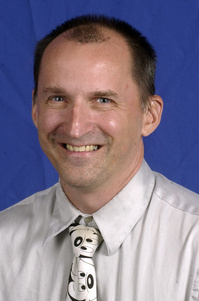By Mark Guydish
Times Leader
August 3, 2010
http://www.timesleader.com/opinion/columnists/guydish/Accusations__of_abuse_linger_decades_later_MARK_GUYDISH_OPINION_08-02-2010.html
 |
| Mark Guydish covers education for the Times Leader. Reach him at (570) 970-7161 or mguydish@timesleader.com. A West Hazleton native, I worked as a service technician repairing electronic mailing and shipping systems, a bike shop owner and an Emergency Medical Technician (among other jobs) before landing a reporter job at the Times Leader Hazleton Bureau in 1995. I started by covering primarily politics in Hazleton City and outlying municipalities, eventually became "social issues" team leader in the Wilkes-Barre office with the accent on education, and headed the Hazleton Bureau for a spell before returning to full-time reporting, my preferred position. I'm an avid cyclist and rode across the country in 1990, a trip of more than 5,000 miles from New Jersey to Seattle and down the coast to San Francisco. Years in the Boy Scouts made me a life long backpacker and camper, and I've yet to find a better way to enjoy the quiet lure of winter snow than cross country skiing. Mark also writes a regular blog for timesleader.com. |
It’s a dark stain on a long-dead priest, reopening the wound that never heals.
Accusations emerged recently that another man of the cloth in the Diocese of Scranton has been accused of sexual misconduct with young people. This time, it was the late Father James McAuliffe, who died in 1989.
An ad ran in a newspaper asking former altar boys and students from Holy Saviour Parish in Wilkes-Barre to call a number if they wanted to talk about McAuliffe. The diocese investigated, and the person who ran the ad said he was a victim of abuse by McAuliffe during his tenure at Holy Saviour.
McAuliffe served as assistant pastor at Holy Saviour from September 1954, to April 1963, which means the abuse could have occurred 47 years ago.
This doesn’t minimize the impact of such abuse. Indeed, it demonstrates how deep the scars can run and how hard it can be for a victim to speak up.
It is such lengthy time spans that help keep this sore festering. The diocese itself admitted dealing with sex abuse allegations for up to six decades. In 2004, as part of a national study commissioned by the U.S. Conference of Catholic Bishops, the diocese reported 25 priests were accused of misconduct between 1950 and 2002.
In this case, the abuse would have occurred at least six bishops ago, under Bishop Jerome Hannan (1954-65). If it began in McAuliffe’s first year at Holy Saviour, that would take us to Bishop William Hafey (1937-54), who is gone so long that a high school was built, named after him and closed.
The duty of the bishops
The question has rightly become: Did bishops cover all this up, protecting priests at the expense of victims? There is good evidence such subterfuge occurred in many places, including here, though bishops can make strong arguments they followed orders from a hierarchy that is absolute.
When two diocesan priests were accused of misconduct in 2001, former Bishop James Timlin did his best to keep their names private. During an interview, he argued passionately – and earnestly, I believe – that he had to balance protection of priests accused but not convicted with the needs of victims.
His successor, Bishop Joseph Martino, handled misconduct allegations the same way he eventually handled everything: Through aloof and terse written statements. It was a cold way to handle such a hot button issue.
This is Bishop Joseph Bambera’s first case of new allegations in this recurring scandal. He was bishop-elect when Father Bob Timchak turned himself in on charges of possessing child pornography, but not officially in charge.
Bambera took a hit only three hours after he was publicly named Martino’s successor. The Survivor’s Network for those Abused by Priests issued a statement calling him a “poor choice,” arguing his testimony in a 2007 sex abuse civil suit case suggested he favored protecting priest over helping victims.
Bambera got a bit of bye on the McAuliffe case: There’s no priest to protect. But in a statement, the diocese seemed to go out of its way to show the victims matter most. Others with allegations against McAuliffe (or any priest) were urged to come forward, law enforcement had been contacted in every county where McAuliffe had worked, and announcements about the situation are to be printed in church bulletins at all parishes where he served during his 47 years here.
Is it enough to help restore tattered trust of the diocese on the issue? I’m not sure.
But it seemed like more than was done in the past.
mguydish@timesleader.com
Any original material on these pages is copyright © BishopAccountability.org 2004. Reproduce freely with attribution.